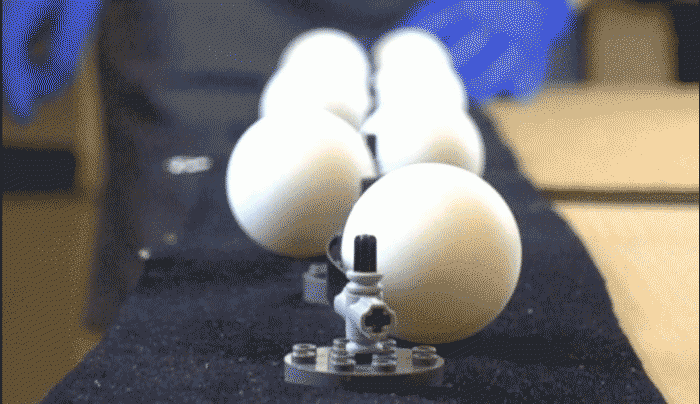News
SEAS researchers have developed a system to send multiple mechanical signals without the need to recharge by developing dynamic arches that can jump between two stable states. (Video courtesy of Harvard SEAS)
Mechanical computers may feel like a thing of the past, but computers that run off of moving parts could be more energy-efficient and reliable than conventional electronics-based computers for certain applications, including microrobotics and space exploration.
One challenge in designing mechanical computers is that components often need to be manually reset after every use. But what if there was a way to send multiple mechanical signals without the need for a reset?
Now, researchers at the Harvard John A. Paulson School of Engineering and Applied Sciences (SEAS) have developed a system to send multiple mechanical signals without the need to recharge the system every time. The researchers harnessed the power of arches — one of the most ancient structural designs — to create a reliable, rechargeable and reversible chain-reaction to transmit energy and signals.
“We demonstrated for the first time the ability to send multiple signals without recharging, sustain different signals traveling in opposite directions, and how to program these two important properties independently,” said Gabriele Librandi, a former graduate student at SEAS and first author of the paper. “Sequential actuation can be preprogrammed by carefully releasing a specific amount of energy in targeted locations.”
“This research represents an important leap forward for sensors with mechanical memory, MEMS (Micro-electromechanical systems), mechanical computing, encryption and wave guidance,” said Katia Bertoldi, the William and Ami Kuan Danoff Professor of Applied Mechanics at SEAS and senior author of the study.
The research is published in Nature Communications.
The world’s most famous arches — such as those that support the Colosseum — are static, meaning they only have one stable state. Here, the researchers developed dynamic arches that can jump between two stable states. The team used two different types of arches — elastic arches which do not release energy upon snapping and plastic arches that do release energy upon snapping. Using these two building blocks, the team built a complex system capable of sustaining a variety of signals in multiple directions without manually recharging them.
Next, the researchers aim to expand the findings in 2D and 3D systems.
The research was co-authored by Eleonora Tubaldi. It was funded by the National Science Foundation under grants EFMA1741685 and DMR-2011754 and Army Research Office Grant W911NF-17-1-0147.
Topics: Applied Physics, Materials
Cutting-edge science delivered direct to your inbox.
Join the Harvard SEAS mailing list.
Scientist Profiles
Katia Bertoldi
William and Ami Kuan Danoff Professor of Applied Mechanics
Press Contact
Leah Burrows | 617-496-1351 | lburrows@seas.harvard.edu




